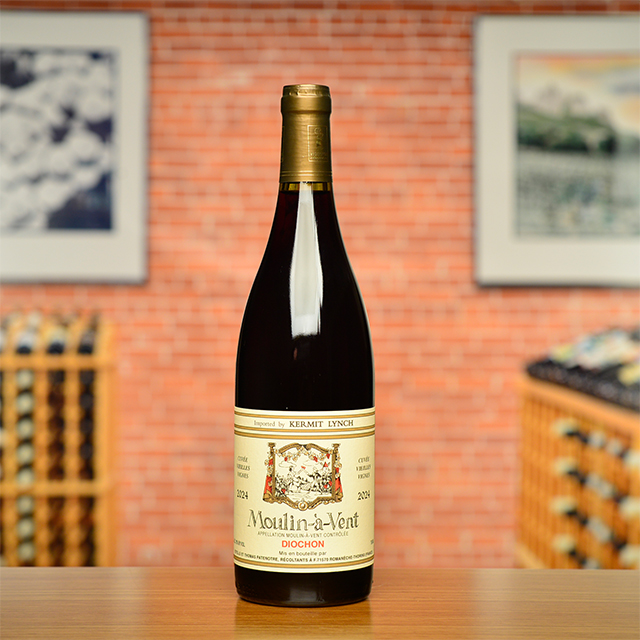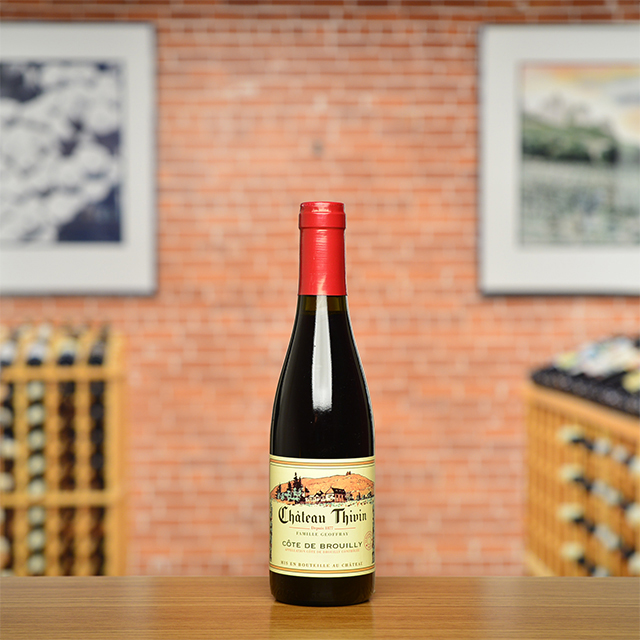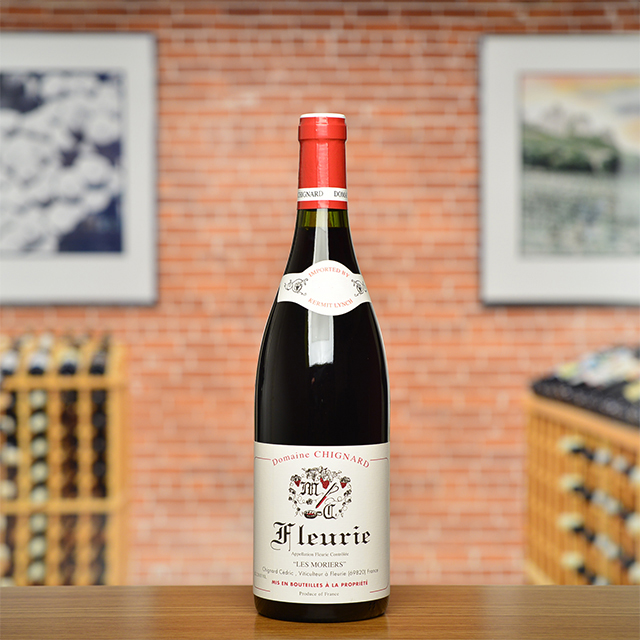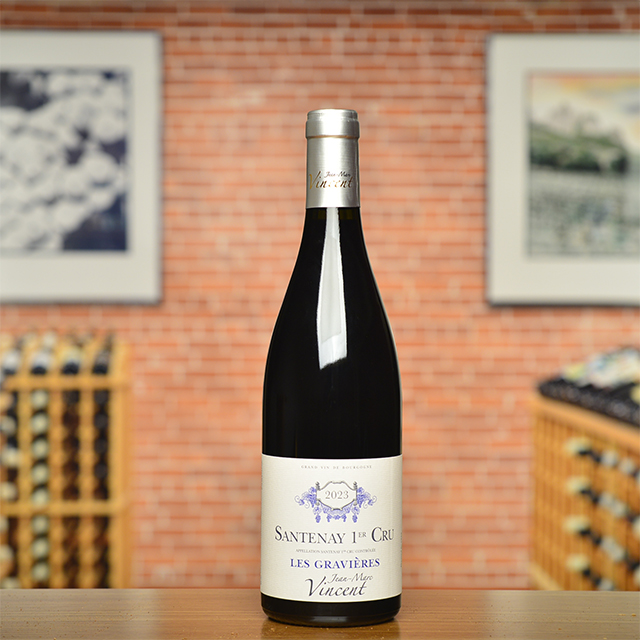Notify me
2021 Morgon “Eponym”
Jean Foillard
When you consider the provenance of this wine from Les Charmes—the highest-elevation lieu-dit in Morgon—along with the cool 2021 vintage and Jean’s house style, which draws out the most velvety side of Gamay, it makes complete sense that this red showcases so much finesse. Lithe, floral, and delicate, it was made to be paired with sushi or seared tuna.
—Tom Wolf
| Wine Type: | red |
| Vintage: | 2021 |
| Bottle Size: | 750mL |
| Blend: | Gamay |
| Appellation: | Morgon |
| Country: | France |
| Region: | Beaujolais |
| Producer: | Jean Foillard |
| Winemaker: | Jean Foillard |
| Vineyard: | 45 - 50 years; 1.5 ha total |
| Soil: | Granite |
| Farming: | Organic (certified) |
| Alcohol: | 13.5% |
More from this Producer or Region

2024 Côte de Brouilly
France | Beaujolais
Brambly and mineral, this bottling exudes both the convivial charm of Gamay and the crunchy intensity of the Côte de Brouilly.

2024 Moulin-à-Vent “Vieilles Vignes”
France | Beaujolais
Moulin-à-Vent has a unique, earthy, chewy edge to it that you just can’t find anywhere else.

2021 Beaujolais Blanc “Terrain Rouge”
France | Beaujolais
In classic Thévenet fashion, the wine is bright and energetic—a snappy Chardonnay that tastes like fresh green apple skin with a whisper of gentian.

2024 Côte de Brouilly HALF BOTTLE
France | Beaujolais
Loaded with wild fruit, spice, and crunchy minerality, Thivin's Côte de Brouilly marries to perfection with soulful cuisine.

2024 Chiroubles “Cuvée Léa”
France | Beaujolais
Floral and succulent, bursting with notes of little red berries, but it is also delicate and light on its feet.

2023 Fleurie
France | Beaujolais
Light and living, charged with herbs, cranberry, and strawberry.

2024 Beaujolais Blanc
France | Beaujolais
Do not miss this outstanding, value-driven Chardonnay from one of our most beloved French domaines.

2024 Fleurie “Les Moriers”
France | Beaujolais
** New Wine Added ** Chignard’s Les Moriers, coming from their old vines in the heart of this parcel, has distinction a-plenty, with a great mouthful of Gamay fruit.

2021 Brouilly
France | Beaujolais
A generous dash of plump, sun-ripened fruit enveloping a granite core.

2023 Chénas “Les Blémonts”
France | Beaujolais
Structured yet full of energy, with notes of blueberry, spice, and other things nice.
About The Producer
Jean Foillard
About The Region
Beaujolais

After years of the region’s reputation being co-opted by mass-produced Beaujolais Nouveau and the prevalence of industrial farming, the fortunes of vignerons from the Beaujolais have been on the rise in the past couple of decades. Much of this change is due to Jules Chauvet, a prominent Beaujolais producer who Kermit worked with in the 1980s and arguably the father of the natural wine movement, who advocated not using herbicides or pesticides in vineyards, not chaptalizing, fermenting with ambient yeasts, and vinifying without SO2. Chief among Chauvet’s followers was Marcel Lapierre and his three friends, Jean Foillard, Guy Breton, and Jean-Paul Thévenet—a group of Morgon producers who Kermit dubbed “the Gang of Four.” The espousal of Chauvet’s methods led to a dramatic change in quality of wines from Beaujolais and with that an increased interest and appreciation for the AOC crus, Villages, and regular Beaujolais bottlings.
The crus of Beaujolais are interpreted through the Gamay grape and each illuminate the variety of great terroirs available in the region. Distinguishing itself from the clay and limestone of Burgundy, Beaujolais soils are predominantly decomposed granite, with pockets of blue volcanic rock. The primary vinification method is carbonic maceration, where grapes are not crushed, but instead whole clusters are placed in a tank, thus allowing fermentation to take place inside each grape berry.
Much like the easy-going and friendly nature of many Beaujolais vignerons, the wines too have a lively and easy-drinking spirit. They are versatile at table but make particularly good matches with the local pork sausages and charcuterie. Though often considered a wine that must be drunk young, many of the top crus offer great aging potential.
More from Beaujolais or France
2024 Chiroubles “Cuvée Léa”
Guy Breton France | Beaujolais
2024 Côte de Brouilly MAGNUM
Château Thivin France | Beaujolais
2024 Beaujolais MAGNUM
Domaine Dupeuble France | Beaujolais
2018 Brouilly
Alex Foillard France | Beaujolais
2022 Régnié
Guy Breton France | Beaujolais
2023 Chénas “Vibrations”
Domaine Thillardon France | Beaujolais
2024 Morgon “Vieilles Vignes”
Jean-Paul et Charly Thévenet France | Beaujolais
2024 Fleurie “Les Moriers”
Domaine Chignard France | Beaujolais
2022 Côte de Brouilly
Guy Breton France | Beaujolais
2024 Beaujolais
Domaine Dupeuble France | Beaujolais
2024 Régnié “Grain & Granit”
Jean Paul et Charly Thévenet France | Beaujolais
2023 Chénas “Chassignol”
Domaine Thillardon France | Beaujolais
2024 Chiroubles “Cuvée Léa”
Guy Breton France | Beaujolais
2024 Côte de Brouilly MAGNUM
Château Thivin France | Beaujolais
2024 Beaujolais MAGNUM
Domaine Dupeuble France | Beaujolais
2018 Brouilly
Alex Foillard France | Beaujolais
2022 Régnié
Guy Breton France | Beaujolais
2023 Chénas “Vibrations”
Domaine Thillardon France | Beaujolais
2024 Morgon “Vieilles Vignes”
Jean-Paul et Charly Thévenet France | Beaujolais
2024 Fleurie “Les Moriers”
Domaine Chignard France | Beaujolais
2022 Côte de Brouilly
Guy Breton France | Beaujolais
2024 Beaujolais
Domaine Dupeuble France | Beaujolais
2024 Régnié “Grain & Granit”
Jean Paul et Charly Thévenet France | Beaujolais
2023 Chénas “Chassignol”
Domaine Thillardon France | Beaujolais
Vintage Chart Mentality

Vintage Chart Mentality
Trust the great winemakers, trust the great vineyards. Your wine merchant might even be trustworthy. In the long run, that vintage strip may be the least important guide to quality on your bottle of wine.—Kermit Lynch

















